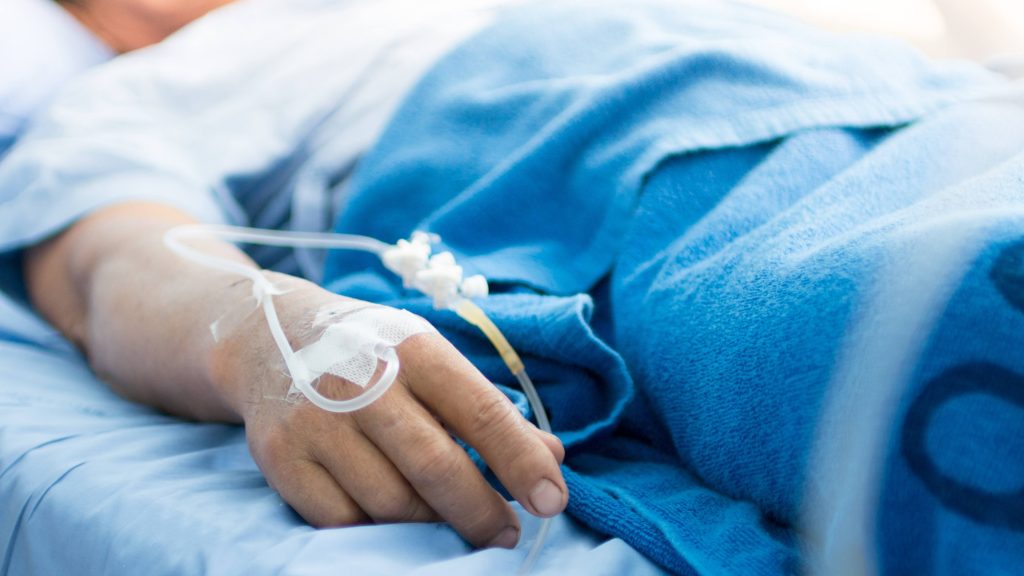-
What does supportive care mean for patients with COVID-19?

Social distancing helps prevent the spread of COVID-19. Most patients who contract the virus will have mild symptoms. Those at greatest risk of developing severe disease include the elderly and people with underlying conditions, such as heart disease, lung disease, and diabetes. Dr. Clayton Cowl, a pulmonologist and Chair of Mayo Clinic's Division of Preventive, Occupational and Aerospace Medicine, says there is no cure or proven treatment for COVID-19, although early clinical studies have shown promise for several medications. The first-line treatment at this time is supportive care, which can help sick patients endure the disease.
What do the terms 'supportive treatment' or 'supportive therapy' mean?
"Supportive treatment refers to what we can do to relieve the symptoms of COVID-19," says Dr. Cowl. "By closely monitoring patients, helping them breathe, delivering intravenous fluids, keeping their fever down and treating cough, we can hopefully prevent adverse events, such as chronic shortness of breath, or worse, death in severe cases. But as the number of severe cases increases, we must prepare for delivering supportive care to more people with the illness."
Watch: Dr. Cowl discusses supportive treatment for people with COVID-19.
Journalists: Broadcast-quality sound bites with Dr. Cowl are in the downloads at the end of the post. Please courtesy "Clayton T. Cowl, M.D. / Preventive, Occupational and Aerospace Medicine / Mayo Clinic."
Supportive care to help patients breathe
"Supportive treatment, what's that?" asks Dr. Cowl. "Sometimes we have to provide extra oxygen, supplemental oxygen. Sometimes it involves actually applying something called 'bidirectional positive airway pressure' or even putting someone on a mechanical ventilator temporarily for those who are extremely ill. Most people don't require that level of support."
Why patients may need help breathing:
"As with any type of infection, the virus that causes COVID-19 can prompt a large inflammatory response within the lungs themselves," says Dr. Cowl. "This causes you to have difficulty with oxygenation. You may feel as if you're at the bottom of a pool and can't get to the top fast enough. You feel short of breath because the parenchyma, or the spongy part of the lung, is being affected. You can develop this not only from COVID-19, but any type of viral pneumonia or bacterial pneumonia."
Other types of supportive care:
"It's making sure that you stay adequately hydrated," says Dr. Cowl. "Its making sure your blood pressure doesn't get low because you're getting dehydrated. It's giving medicines to keep your temperature down. Supportive treatment for COVID-19 is similar to treatment for any severe flu symptoms."
Supportive treatment at home
People with mild symptoms of COVID-19 require self-isolation and treatment at home. Dr. Cowl says these supportive treatments may help reduce symptoms.
- Resting
- Staying hydrated
- Monitoring temperature
- Consulting health care providers about taking over-the-counter medications
- Covering cough and sneezes
- Maintaining a distance of at least six feet from other family members
- Washing hands regularly
- Disinfecting surfaces
- Self-isolating from others at home
- Avoiding sharing utensils
- Considering using paper or disposable products for eating
If your symptoms worsen, consult your health care provider. If emergency symptoms develop, seek emergency medical care.
Emergency symptoms include:
- Difficulty breathing
- Extremely high temperature, 103 F or above
- Chest pain or pressure
- Confusion
- Severe cough with choking
- Blue lips or face
Check the CDC website for additional updates on COVID-19.
For more information and all your COVID-19 coverage, go to the Mayo Clinic News Network and mayoclinic.org.







